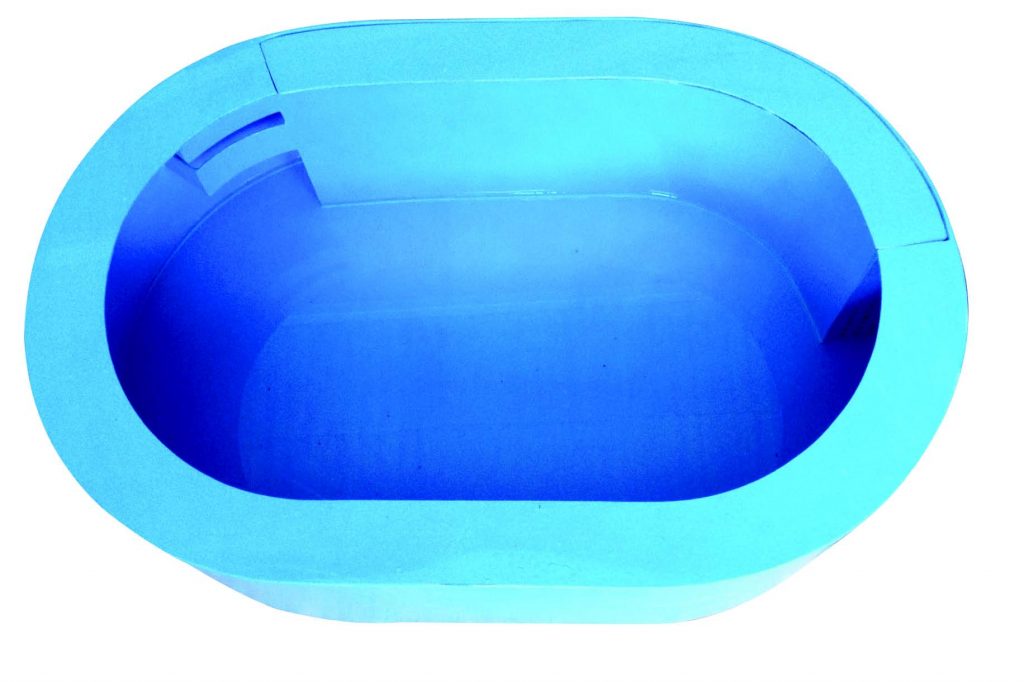Venturing into caring for animals is a long journey of engagement, especially if you are caring for fish. The initial thrill of learning the basics eventually subsides, replaced by a longing to sustain the passion – which can be resolved, for example, by adding more fishes and exploring biotope setups. One of my desires is to create design that will provide fish-keeping a new dimension.

Pond design
My process of designing a pond consists of creating the visuals by drawing by hand or digitally tweaking them, then finally fabricating the product. Most, if not all, my fiberglass designs have the same inclusions: three filtration stages, UV light, and LED lights.
The size of the pond is approximately 20 gallons in water volume. It should be noted that a pond of this size is not an option for house large fishes like koi because they will eventually outgrow it, nor is it for types of fish that have a high jumping ability as the height of the pond would not be suitable for them.

The ideal candidate for a small pond is a small fish that doesn’t have the ability to jump. One fish in particular who would thrive in this pond is the goldfish.
Theme set-up
In 2010, there was a movie based on an animated series titled The Last Airbender. The film was about a war between the elements of nature, specifically water, fire, earth, and air. Here, there was a particular scene where the life of Yin and Yang was represented by two tropical fishes with contrasting colors.
Yin and Yang are generally defined as complementary rather than opposing forces that interrelate to form a dynamic system in which the whole is greater than the gathered parts even though they are visually different.
I applied this theory to my oval pond design. I began to create a scene where the size of the pond, even if it was small, could tell a beautiful story.
Selecting a goldfish for the oval pond

1. Great to view from the top (Jikins and Wakins)
2. Variety in
tail length (long or short)
3. Variety in body shape (slim or round)
4. Will grow to 4 inches in body size (Shubunkin)
5. Black and white varieties to represent the Yin and Yang colors (Ryukin and
Moors)
And the winner is
With the qualifications that I wanted, only one variety of goldfish had it all, and that is my all-time favorite: the oranda goldfish.
This is because the oranda has the widest range of options available in terms of tail, color, and body and head shape.Great to view from the top (Jikins and Wakins)Will grow to 4 inches in body size (Shubunkin)Variety in tail length (long or short) Variety in body shape (slim or round).
A few weeks before I came up with The Last Airbender theme idea, I brought home several oranda goldfish. They were a mix of dark almost black and matte color varieties, which made them perfect as part of my Yin and Yang concept.
Setting up the oval pond
I placed two goldfishes that were around 1.5 inches long: one matte white and another dark brown. My objectives for the two orandas are to give them ample space for maximum growth, minimize ammonia buildup caused by over population, and appreciate the yin-and-yang color theme.

I used old water from my larger pond where the two goldfish were originally located. Doing this minimized the cycling and acclimation process. After filling up the pond with water, I ran the submersible pump for the filtration system. I also made a backup aeration system for emergency purposes. I then placed a small pot with few aquarium plants that goldfishes won’t likely consume.
Lastly, I carefully transferred the goldfishes to their new home. After a few minutes, they were already swimming gracefully without any sign of stress from the transfer.
Verdict
Comparing what I had in mind with the actual result was very different, but I was still so pleased with the outcome. The grace and beauty of the goldfish swimming in the oval pond were what satisfied me. Nothing compares to personally seeing goldfishes in motion.
I hope that by sharing this new passion of mine, I can show others that caring for goldfish is a journey that can keep you satisfied for a long time.
You might want to read:
– Fishes and other aquatic life at risk in Taal lake
– Seeing red: Dominant red-colored fishes
– The charismatic cichlids of Central America





